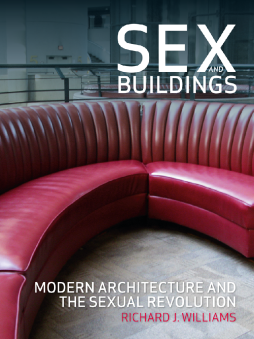
Additional Information
Book Details
Abstract
Massive modern skyscrapers, obelisks, towers—all are structures that, thanks to their phallic shape, are often associated with sex. But other buildings are more subtly connected, as they provide the frameworks for our sexual lives and act as reminders of our sexual memories. This relationship between sex and buildings mattered more than ever in the United States and Europe during the turbulent twentieth century, when a culture of unprecedented sexual frankness and tolerance emerged and came to dominate many aspects of public life.
Part architectural history, part cultural history, and part travelogue, Sex and Buildings explores how progressive sexual attitudes manifest themselves in architecture, asking what progressive sexuality might look like architecturally and exploring the successes and failures of buildings' attempts to reflect it. In search of structures that reflect the sexual mores of their inhabitants, Richard J. Williams visits modernist buildings in Southern California, the Westin Bonaventure Hotel, the Playboy Mansion in Chicago, the Seagram in New York, communes from the 1960s, and more. A fascinating and often funny look at a period of extraordinary social change coupled with aesthetic invention, Sex and Buildings will change the way we look at the buildings around us.
“A fast-paced and insightful journey through architectures in which sex and sexuality are writ large. A thought-provoking, fascinating book.”
— Iain Borden, University College London
“An adventurous sex-travelogue, beautifully written and pleasurable from cover to cover.”
— Times Higher Education
“Williams observes in Sex and Buildings that, on the whole, sexual experimentation and research burgeoned during the twentieth century. He examines how architecture, modern or otherwise, reflected and/or shaped this new behavior. Architects rarely have discussed how their buildings accommodate or promote sexual activity. To measure architecture’s potential to suggest or trigger erotic impulses, the author considers a diverse range of structures, including Richard Neutra’s Lovell Health House, Mad Men television sets, Wilhelm Reich’s orgone accumulator, John Portman’s Bonaventure Hotel, and various utopian commune experiments. He describes their erotic symbolism and examines them from various, often conflicting, methodological viewpoints . . . This approach demonstrates a great nimbleness of mind.”
— Choice
Richard J. Williams is professor of contemporary visual cultures at the University of Edinburgh and the author of Brazil: Modern Architectures in History, also published by Reaktion Books.
